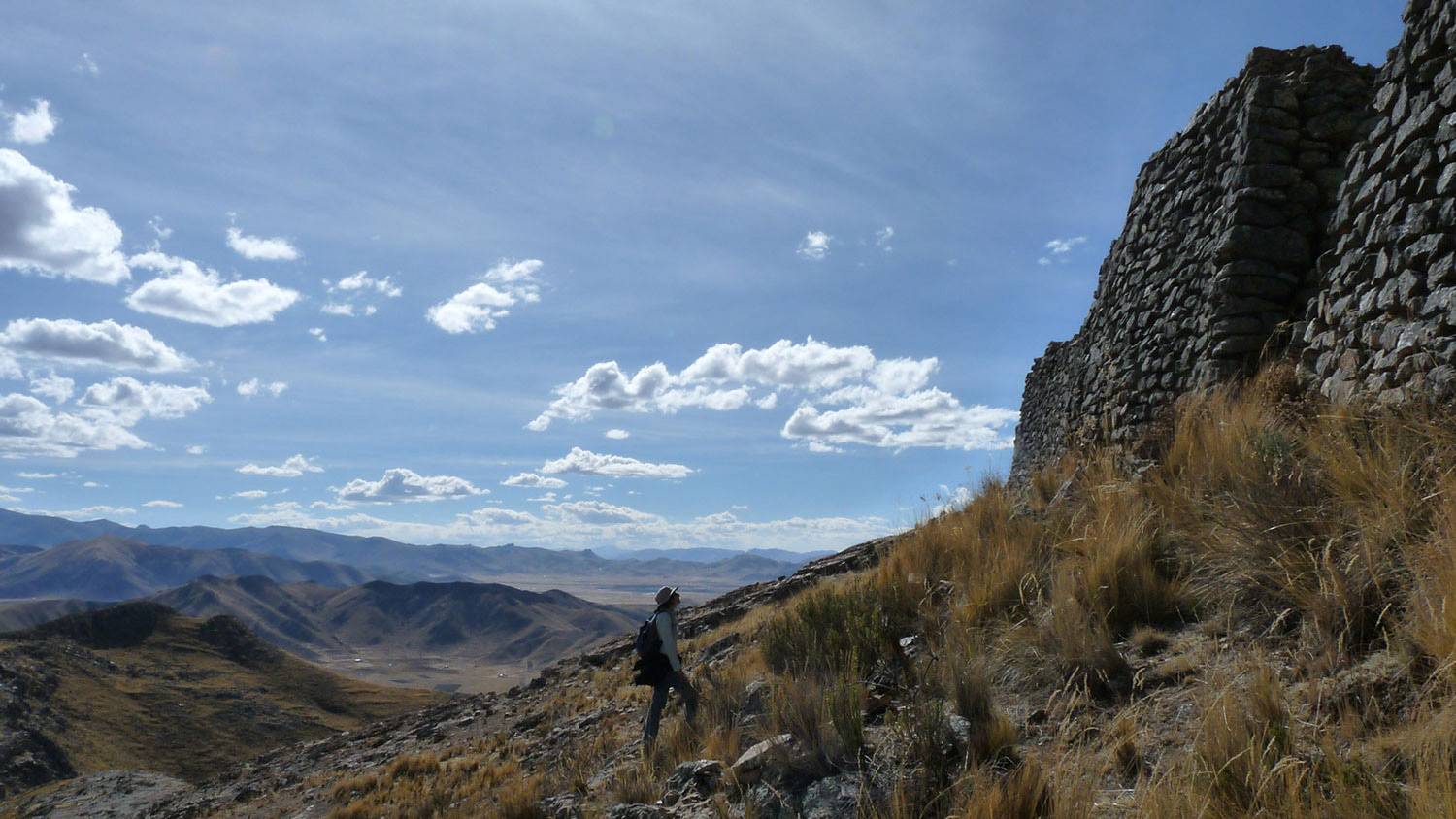Elizabeth Arkush, professor of archaeology at the University of Pittsburgh, delivered this year’s Aveni Lecture on April 25.
Titled “The Archeology of Conflict and Community in the Pre-Columbian Andes,” the talk provided a glimpse into the complex societies that flourished in the region for thousands of years before the arrival of Europeans. Arkush drew upon two decades of investigation into Andean hillfort settlements, known as pukras, in the Peruvian Titicaca Basin, sharing insights into the relationships between violence and identity building in the Andean region.
In her research, Arkush uses advanced spatial technologies to enhance understanding of Andean archaeology. Drone mapping, GIS analysis, and remote sensing techniques enable her to capture high-resolution images, create detailed maps, and study landscapes in new ways.
“Many of the Andean sites we are studying are at an elevation of approximately 13,000 feet meaning that we would have to walk up a steep hill for over an hour just to access them,” Arkush said. “Drones, on the other hand, can complete the journey in mere minutes, meaning that we can not only get a sense of sites we are studying more quickly than on foot but we also see them from new perspectives.”
Such innovations have allowed researchers to uncover new details and insights into the ancient Andean world. Arkush’s ongoing projects in Peru, particularly in the Lake Titicaca Basin, showcase the application of drones in studying ancient sites through ethnohistoric and archaeological methods.
“These fortified settlements serve as an entry point for exploring the ways in which Andean community grew and developed around conflict, defense, and aggression,” said Arkush.
Settlements not only provided physical security but also served as centers for political leadership, shaping the distribution of power within Andean societies. According to Arkush, hillforts played a central role in defining social and political hierarchies, shaping settlement patterns, and influencing ritual practices within Andean societies.
Arkush focused on disproving the myth that Andean societies were more violent than other societies, that they were brutal without reason, or that their conflicts served no greater function for their societies.
According to the professor, violence and conflict were not solely destructive forces but were also integral to the fabric of Andean society. They shaped economies, social and political relations, institutions and individual identities. In particular, conflict served to help Andean societies to define gender roles, create hierarchies, and distinguish between different groups within the region.
“While Andean conflict was certainly destructive, it was also extremely generative,” Arkush said. “When we consider violence and warfare from this perspective, we can see how Andean gender, health, class, and even community can be defined through conflict, and we can come to a greater understanding of the incredible variety and richness of what Andean society has created over time.”
The Aveni lecture was sponsored by the Native American Studies Program and is named in honor of Anthony Aveni, Russell Colgate Distinguished University Professor of astronomy and anthropology and Native American studies emeritus.
